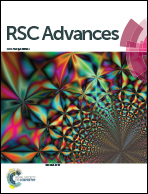Bi-functional titanium-polydopamine-zinc coatings for infection inhibition and enhanced osseointegration
Abstract
The ideal orthopedic implant coating is expected to both inhibit microbial infection and promote osseointegration. In this study, Zn ions were immobilized on a Ti substrate via a polydopamine (PDA) chemical surface modification to prepare Ti-PDA-Zn coatings. Scanning electron microscopy (SEM), atomic force microscopy (AFM), energy-dispersive X-ray spectroscope (EDS), X-ray photoelectron spectroscopy (XPS), contact analysis system, and inductively coupled plasma atomic emission spectrometry (ICP-AES) were used to analyze the morphology, composition, wettability, and zinc ions release of the coatings. The Ti-PDA-Zn coatings demonstrated excellent antibacterial activities in vitro against both Staphylococcus aureus and Escherichia coli. The coatings additionally displayed good biocompatibility, as confirmed by cytoskeletal observations and cell viability assays. Furthermore, the in vivo results confirmed the excellent antibacterial properties and improved osseointegration capability of the Ti-PDA-Zn coating in the presence of S. aureus. The present findings indicate that the Ti-PDA-Zn coatings prepared herein have potential application in orthopedic implantation.



 Please wait while we load your content...
Please wait while we load your content...